7 Essential Storytelling Techniques for your Business Presentation
All memorable presentations have at least one story. Just think about it. Without a story, presentations would fall flat - unless you’re Tony Robbins. Luckily, there are many storytelling techniques for business presentations that you can use to engage an audience, change their perspective, and get them to take action.
Here you’ll learn all about the power of storytelling in presentations and seven techniques to start creating more persuasive presentations today!

What is Business Storytelling?
If storytelling is about using a story to make an emotional connection with your audience, business storytelling attaches that well-defined story to your business purposes.
You might be familiar with names like Richard Branson, Tim Cook, or Sheryl Sandberg. They’re very well-known business leaders, and the three of them appeared on the Time 100’s list of most influential people in the world. But there’s something else they have in common: They all happen to use stories to get their ideas across.
Richard Branson once said:
“Entrepreneurs who make a difference are, in effect, professional storytellers.” - Click to tweet
But you don’t have to be an entrepreneur or a famous CEO to start sharing compelling stories. Everyone can benefit from storytelling in a business. Whether you want to pitch a project, close sales deals, or get your team excited about one of your ideas, good stories can take you there.
To sum it up, business storytelling uses stories to make people care enough about your company, product, or project and take your desired action.
But, Why Is Storytelling Vital for Your Business Presentations?
No matter what type of presentation you’re working on: sales decks, status reports, business plans, data findings, project proposals…all of them aim to influence a decision.
And here’s where the power of storytelling comes in! While data appeals to your logical side, stories speak to your emotions. Do you remember the last time you felt moved by a movie or book? Well-crafted stories put you in the character’s shoes, and you start to understand their challenges as if they were your own. This is called empathy.
The same can happen in a business setting. Storytelling can make your audience relate to the problems or issues you’re presenting. But there’s more. If we go to the biological side, stories increase our levels of dopamine, oxytocin, and endorphins. These are chemicals in our body associated with our capacity to relax, trust, and bond with others. In this scenario, people are more likely to embrace the ideas and solutions you offer.

So, if you ask what difference storytelling can make in your presentations, the answer is simple. When you use stories, you build a stronger connection with your audience, making it easier for them to understand and support your ideas.
Maya Angelou said it best:
“People will forget what you said, people will forget what you did, but people will never forget how you made them feel.”
And that’s definitely something stories can help you with.
These are some other benefits of using storytelling in your business presentations:
- Shows the human side of your company
- It helps your audience understand complex information
- It makes your ideas memorable
- It enables you to stand out among your competitors
- It moves people to action
Presentation Topic vs. Presentation Message vs. Presentation Purpose
Before even thinking of a compelling story, you need to define three key aspects of your presentation: topic, central message, and purpose.

Most people jump right into the slides and insert information on the go. And let's be honest, all of us tend to do this. But taking a few minutes to define these three elements will make a huge difference in how you present your ideas. And, most importantly, it will help you focus on what you really want to say. Let’s go quickly over each point:
Presentation Topic
This one is very simple. It’s a plain answer to “What is your presentation about?”. Let’s say you stumble with a colleague on your way to a meeting, and he asks you: “Hey, Alex, what you’ll be talking about today?” You don’t want to be late, so you summarize it in a few words. Short and to the point. That’s your presentation topic.
For example:
- A marketing campaign proposal for product XYZ
- The results of our latest market research in Idaho.
- The monthly subscription to our flagship service.
I know this step may sound basic, but trust me, it’ll make sense in a bit.
Presentation Message
Sometimes called your “big idea” or “central message.” This is a statement around your topic (hence, the importance of defining it first). In simple words, it’s what your audience should take away from your presentation. Ask yourself, “What do you want people to remember at the end?”
Let’s answer according to the previous examples:
- Video marketing on social media is the best way to introduce product XYZ to younger audiences.
- We can appeal to more of our customers in Idaho if we partner with local entrepreneurs.
- You can save up to 50% of the department budget with a monthly subscription to service A.
Your presentation message is the main idea you’re trying to “sell” to a specific audience. And knowing it early is key for building your story. We’ll come back to this concept later on.
Presentation Purpose
Finally, your presentation purpose, as its name says, is the reason why you’re making a presentation in the first place. What do you want to achieve? What’s the change you want to make in your audience? Your purpose is crucial to structure a convincing presentation.
These are some examples:
- Get your manager’s approval for a marketing campaign
- Get the board members to agree on increasing the budget for the Idaho team.
- Close a monthly subscription deal to our flagship service with a multinational company.
7 Storytelling Techniques for your Business Presentations
Now that we’re clear on our key concepts let’s see how to use storytelling in your business presentations. These are seven techniques that will help you craft better stories, build compelling presentations, and boost the impact of your ideas.
Storytelling Technique #1: Find Authentic Stories
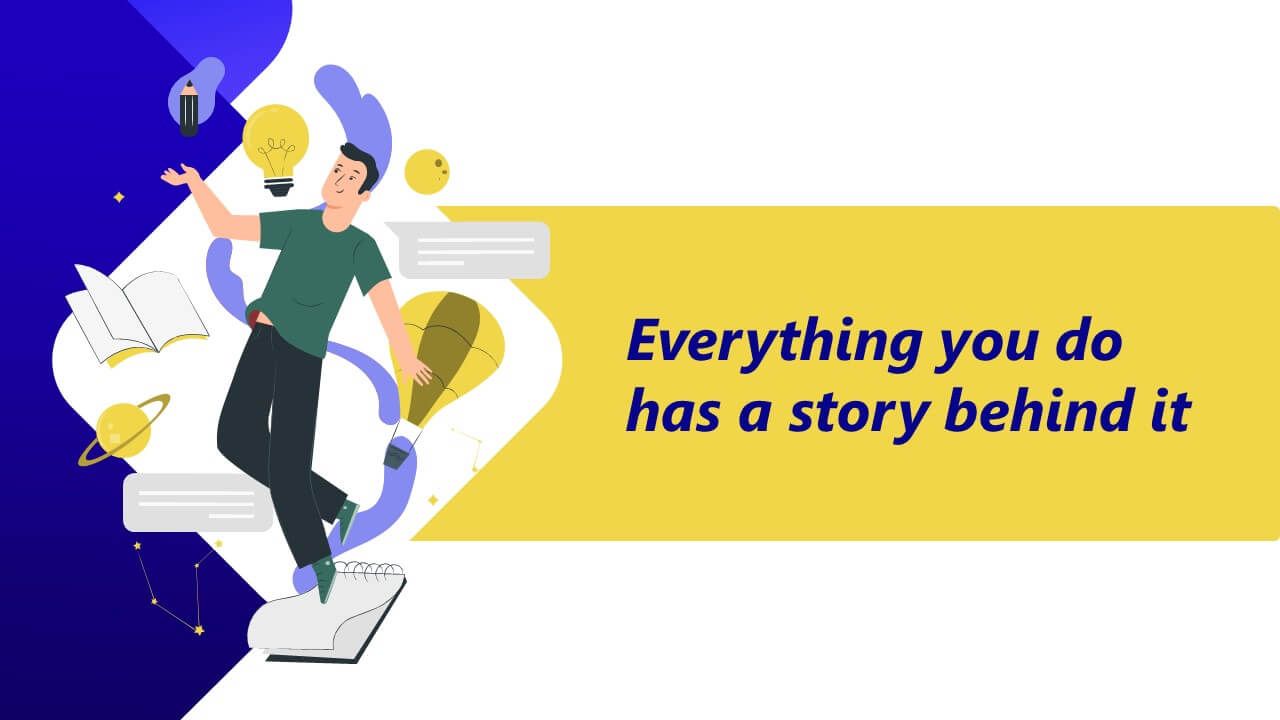
In a world of fake news, people yearn for what’s real. So you don't want to use fictional stories. You need authentic ones.
Luckily, everything you do has a story behind it. You just have to be perceptive enough to catch them. And believe me, it’s easier to use an existing story than making up one.
For example, at 24Slides, our sales team tends to show clients the WHY of the business and WHO are the people behind it. Contrary to what others might believe, the 24Slides’ purpose story garners positive reactions from our clients and even increases their interest in learning more about the company.
Now, where do you find YOUR business stories? Here are some ideas:
- Your customer reviews
- The employees’ success stories
- Your company’s mission
- Challenges you’ve overcome with your team
Be aware that your story is not the same as your presentation message. But your story MUST support your message (aka “your big idea” - we talked about this in the previous section)
Storytelling Technique #2: Use Narrative Structures

Have you ever shared a joke and didn't get the explosive response you were expecting? Yeah, we've all been there.
It’s not enough to identify WHAT you want to tell, but also HOW you’re going to say it. You need to craft your story in a way that's appealing to your audience. Thankfully, you don’t have to reinvent the wheel. I’m going to show you three proven narrative structures you can apply to your stories right now:
A) The Hero’s Journey
Every writing class teaches you this framework. The Hero’s journey or Monomyth starts with the protagonist (Hero) leaving their home and going on an adventure. Here, the hero faces different obstacles and learns a lesson that helps them obtain a victory. Finally, the hero returns home with that newfound wisdom and helps their community.
In short, it’s a story of transformation. And you can divide it into three stages:
- Departure: The transition from the ordinary world to the unknown.
- Initiation: Obstacles appear, lessons are learned, and the hero starts to change.
- Return: The big challenge takes place, and the hero wins thanks to their transformation. By the end, the hero comes back with a reward to their familiar world.
Some successful examples of the monomyth are The Lion King, Star Wars, and Mulan.
B) The Story Mountain
This one is perfect for building tension. You start by setting up a scene and introducing the characters. Then, the conflict appears in a series of small challenges. In the most important part of the story, the problem reaches a high point, and the action begins. After the climax, our protagonist sorts out the problem, and you end the story with a lesson.
I just explained the classical five-act structure that goes through a beginning, conflict, climax, deflation, and resolution. For a shorter version, you can also use the 3-act structure: set up, confrontation and resolution.
Think about which one gives your story a better chance to engage your audience and support your presentation message.
C) In-Medias Res
If you want to grab the attention from the very beginning, this one’s for you. The narrative technique in-medias res (Latin for “in the midst of things'') is used for stories that start in the heat of the action. This is how it works: You open with the climax (or near the end of your story) and keep your audience eager to understand what’s happening. Then you go back to the past and explain how things evolved.
Want a practical example? Watch 12 Years a Slave, Pulp Fiction, or The Greatest Showman. These movies start in-medias res and will help you understand its power.
Storytelling Technique #3: Make your Audience the Real Hero
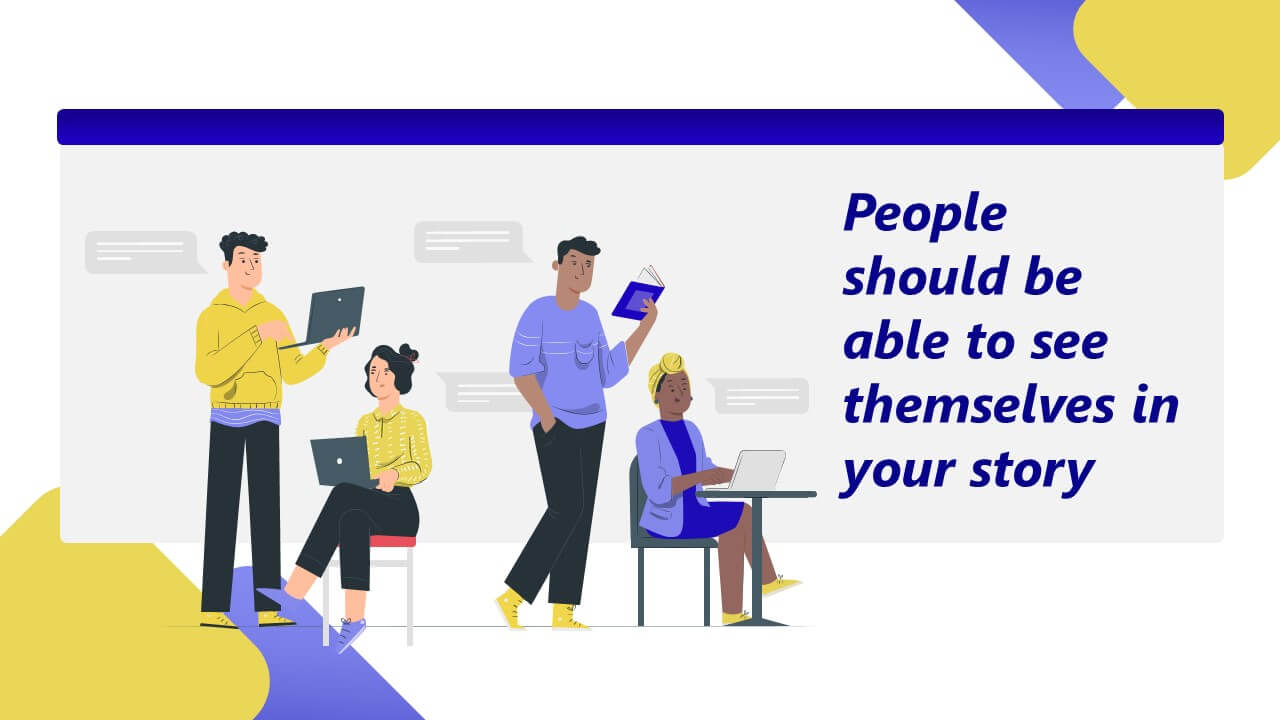
One might believe that the hero of your story is obviously the company or your product...err. The audience is the real hero! Instead of conveying “THIS is what my product does,” you should go with “This is what YOU can do with my product/idea/solution.”
Let’s say you’re looking for approval of your campaign idea. In a normal scenario, you would list all the wonderful things your idea is, hoping your manager thinks the same and gives you the green light. Well, storytelling can get you there faster.
Share a story where company A is failing to address a consumer’s need. And two months later, before Company A realizes it, Company B already has a fair share of the market. What happened? Company B dared to break the mold in their industry and run a video ad campaign charged with strong consumers’ insights. The result? Company B conquered a new target audience, increased sales, and gained top of mind of the category. And you're confident your campaign proposal can do the same for the company. Now, you proceed to present your idea.
If you really want people to embrace your ideas as their own, they should be able to see themselves in your story. Always.
Storytelling Technique #4: Don’t forget the visual part!
We’ve already covered some points around your story, but what about your presentation? In business, everything influences how people perceive your messages. So, your PowerPoint slides should not only match up to your vibrant story but boost its effect on your audience.
Here’s a quick checklist of things to consider when working in your PowerPoint presentations:
- Use imagery to immerse your audience in the world of your story.
- Your visuals should support the key points of your story. Place them strategically.
- Use your slides to highlight only some phrases or powerful words from your speech. Let them be the ones related to your presentation message.
- Keep a consistent font from cover to cover.
- Colors also communicate! Make sure your color scheme delivers the right perceptions about your topic and persona.
Don’t believe presentation design can add up to your objectives? Check out this before-and-after example from the 24Slides team:

It’s a complete change from an unoriginal blank slide that makes you yawn to a stunning slide with a purpose.
And this even becomes a vital factor when you have to gain a client. Most of the time, you’re up there competing with other businesses, and your goal is to be memorable. Storytelling can do its part, but a branded presentation makes it easy for people to associate your message with your brand. It’s all about increasing the impact.
Storytelling Technique #5: The More Specific, The Better
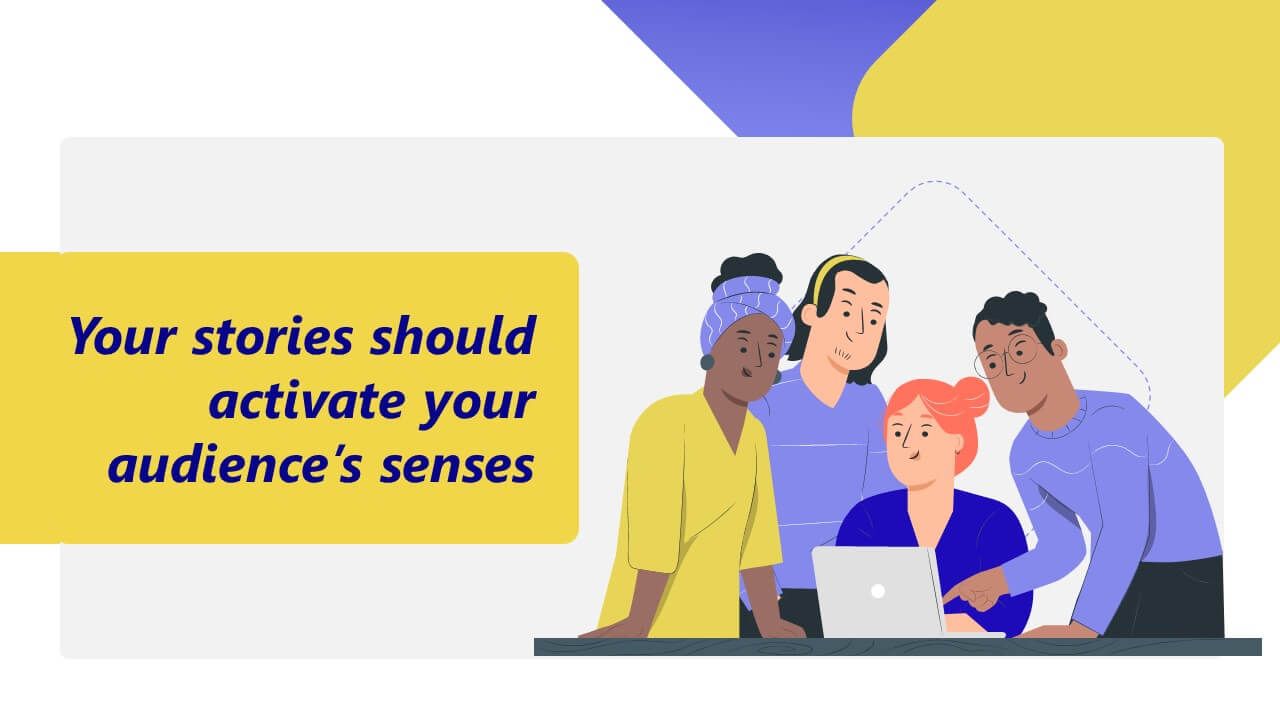
At this point, it’s clear that the essence of storytelling is striking a chord with your audience. And one thing that helps you craft emotionally charged stories is adding details.
You need to present characters, scenarios, and situations that are easy to relate to. And being specific is what brings the elements of your story to life.
Remember, your stories should activate your audience’s senses. You don’t want people just to nod politely. You want them to FEEL your narrations.
Storytelling Technique #6: Don’t Hide Your Mistakes
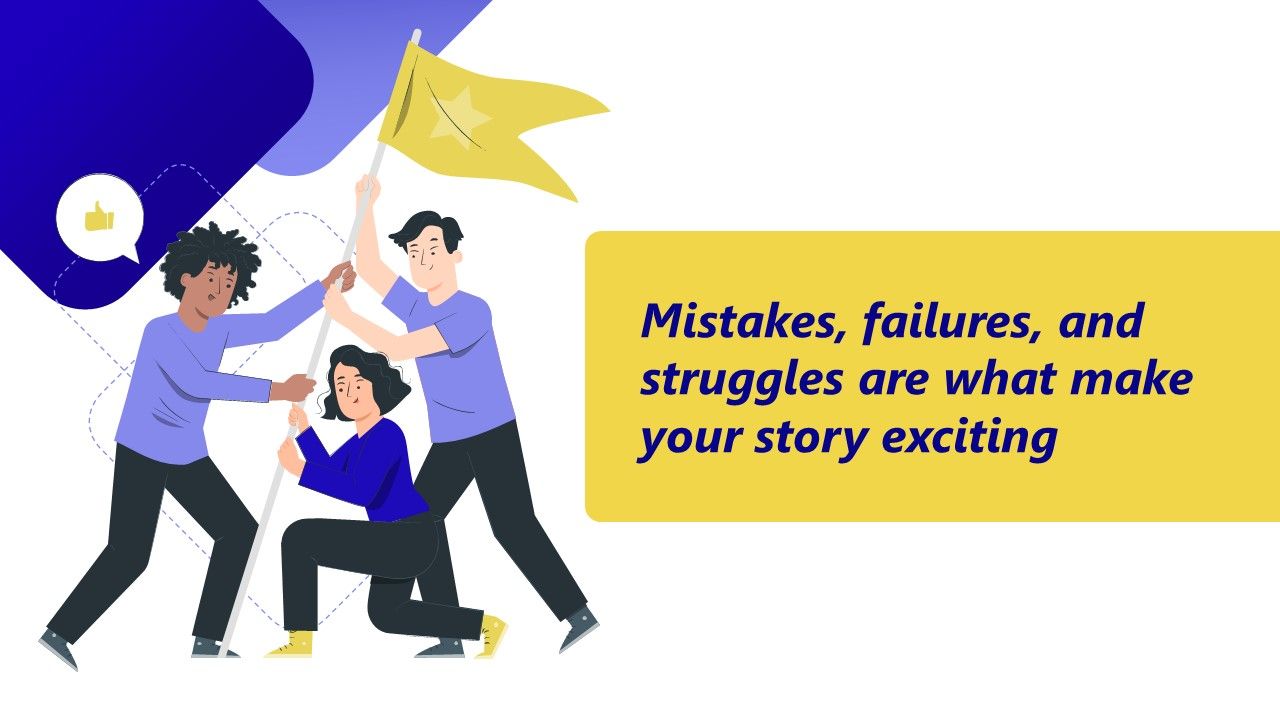
When you work on your business stories, it’s very common to avoid mentioning the things that went wrong. But this is the opposite of what you should do.
Mistakes, failures, and struggles are what make your story exciting and more human - Click to Tweet
Just think about it. Would you rather listen to a story where everything is fine, and everyone lives happily forever or a story with challenges, ups and downs, and life lessons?
Next time you consider not sharing the struggles your team faced during a summer sale, think twice. It could lead to a unique story for a business presentation.
Storytelling Technique #7: Change the Status Quo
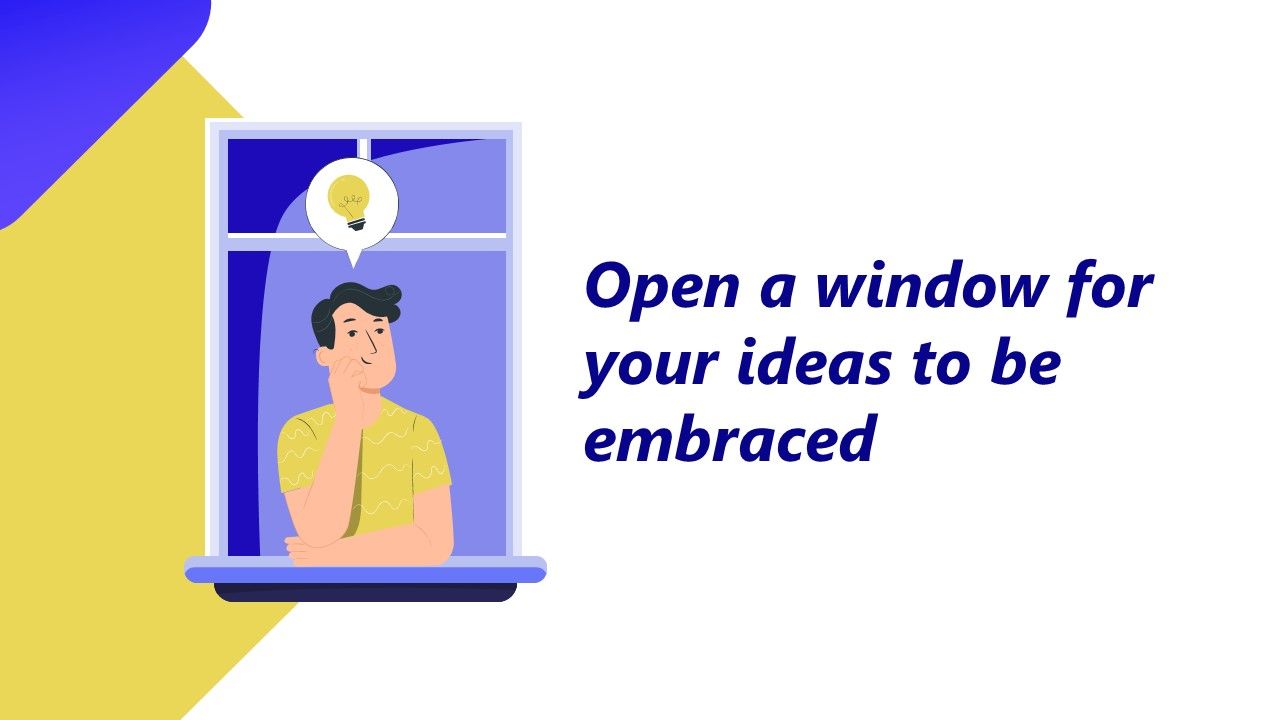
Nancy Duarte, a communication expert, studied persuasive presentations and identified a structure she called “Sparkline.”
It consists of moving your audience between two scenarios: “What is” and “what could be.” This approach allows you to showcase the value of your idea with more impact.
The “What is” responds to the problem you’re trying to solve or the current situation, while the “What could be” is the ideal situation your solution proposes. So, you spend your presentation going back and forth between these two sides and including stories or media that illustrate your ideas.
“Sparklines” is an excellent method to challenge the status quo in your audience’s mind and open a window for your ideas to be embraced. Plus, it engages people in your speech and spurs action.
Extra Resources to Improve Your Presentation Storytelling
If storytelling for presentations really caught your attention, there are more than techniques to hone your skills. Here are online resources that will help improve your presentation storytelling.
Book recommendation: “Made to Stick” by Chip and Dan Heath

Have you ever spent hours putting together a presentation, and when you delivered it, people seemed bored and distracted? No judgment. It has happened to the best of us! This is because you're not making your idea interesting enough for people to pay attention. In “Made to Stick'', you’ll learn how to use the five elements of the SUCCES framework to make your messages interesting, actionable, and memorable. This is essential reading for anyone who has something to share and is looking for their ideas to be unforgettable.
TEDx Talk: “Why storytelling is more trustworthy than presenting data” by Karen Eber
If you have a hard time implementing storytelling with your sales reports and quarterly reviews, this video is for you. Leadership consultant Karen Eber points out that storytelling and data don’t have to be two opposite things. It’s the conjunction of both what makes people care and open their eyes to the problem you want to solve. She also demonstrates the link between storytelling and neurology masterfully, so it’s a must-see talk for any presenter!
You might also like: How to improve your presentation storytelling with Pecha Kucha Presentations.
Presentation Designers
Who said the one who delivers the presentation needs to design it too?
A great way to improve your storytelling skills is getting rid of the tasks that are slowing you down. Like your presentation design! According to our survey, average executives spend around 4 hours every week working on their PowerPoint slides. That's roughly 20 hours a month you can use to gather the right figures, craft better messages, or rehearse your speech instead.
The 24Slides’ PowerPoint designers can help you work smarter by taking full care of your slides' visual appearance and allowing you to focus on what matters most: Polishing your presentation storytelling techniques.

As in all things, the only way to master these storytelling techniques is practice. It’s normal if you feel nervous at first. After all, you’re getting out of your comfort zone. But once you start using storytelling regularly (and see the results!), it will become your secret weapon for successful business presentations.
You might also like this article: How to make a presentation longer




